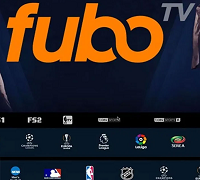A company’s target audience need not be living in the same country and speaking the same language. They could live thousands of miles away, and only the website connects them with the brand. So, brands must ensure that customers living far away find the site easy to use. Using local keywords and buying a domain with the country code are some ways to rank on searches coming from the target region. But it is crucial to understand the concept of international rankings for effective results. Here are some tips for companies to rank internationally.
What is International SEO?
International SEO is optimizing the site so that the audience in the target location will find the site without much effort. It helps the search engine understand the site and show it to people living in those geographical places. In international SEO, all the elements in the site exist for the sole purpose of the audience living in specific countries and speaking different languages. It is different from local SEO, as the brand does not necessarily have a presence in the target location. However, in local SEO, the brand must have a local presence. A mere online presence is not enough, as brands should strengthen their online presence. By working with a Los Angeles SEO agency, companies can dominate the SERP.
Tips to rank in target countries
Understand the Target Audience
Unless brands do market research and determine their target audience, they cannot rank internationally. They should not have a vague or incomplete idea of their audience. But they should conduct research and gather the specifics about their audience. First, brands should find what type of audience shows interest in their brand and products. They can find it by the amount of traffic they receive from a specific region. Also, by enquiring leads, they can identify what part of the world is interested in their products. Brands can work with a Los Angeles SEO agency for data analytics.
After brands have determined where their traffic comes from, they should study their needs and wants. The goal is to target them with specific products that solve their problems. They do not need every product in the company, so brands should determine which products better fit them. They can work with a Los Angeles SEO agency to highlight the products that would solve customer problems.
Brands should study how their audience finds them and the channels they use. With that information, they can target those channels and get more visibility. International SEO is easy when companies know what means their audience use to reach them. They can target particular keywords that increase the chances of being found on the SERP. So, understanding the audience and studying their behavior is the first step in international SEO.
Invest in a High-Quality Translation
Unless the target audience’s language is English, brands need to translate their content. It makes the website more accessible and helps in getting more sales. When people read content in their native language, they can emotionally connect with it. So, it is easier to persuade them by using words used every day.
Companies have various options to translate their content. They can use translation tools to convert the content into the target language. But it risks coming off as too literal and robotic, without a personal touch. The second option is outsourcing to translation agencies. But this option could be detrimental from a sales perspective. The words used in the content should hit the audience’s pain points and create powerful feelings in them. So, the best option for brands is to hire locals and work with them in translating the content. They should understand the brand and its various offerings first. After that, it will be easier for them to attract people by using words that effectively convince people to make purchases. It is also necessary to optimize the site for conversions. Companies can work with a San Diego SEO agency to increase the revenue potential of the site.
Invest in a ccTLD Domain
Brands do not necessarily need a country-specific domain, as they can rank for specific keywords even if they do not have one. But investing in a ccTLD domain boosts SEO efforts and helps Google recognize the site easily. Google uses IP addresses to fetch results for specific queries. So using a ccTLD domain makes Google think that the website belongs to the target region. Likewise, brands can invest in a server in the target country. The combination of the ccTLD domain and a server from the target location, helps brands rank internationally. Consulting with a San Diego SEO agency will help companies determine which servers best suit them.
Content Marketing
Brands that already have a ccTLD domain can take their SEO to the next level with content marketing. They should write content that addresses the situations and conditions of people living in the target region. By including keywords that betray native influences, brands can win the goodwill of the local people. Also, it is crucial to translate the copy, the content, headers, meta descriptions, and all content on the website. With the help of keywords, brands can tell the search engines to rank them in specific regions. Content marketing also helps establish long-term relationships with the audience and eventually convert them into loyal customers.
Link Building
Getting links from bloggers in your target region will make the site even more noticeable to the crawlers. So, brands should reach out to local bloggers and get them to link their sites. If they approach them with valuable content, bloggers will give their nod. But brands should ensure that the links they receive come from professionals and leaders in the industry. If the links come from sites with low domain authority, the rankings would suffer.
Conclusion
There are several other ways brands can make themselves more noticeable to their audience living in different countries. But they must understand the audience and how they reach the brand. Then they can remove obstacles that stand in the way, separating customers and the company.







































































